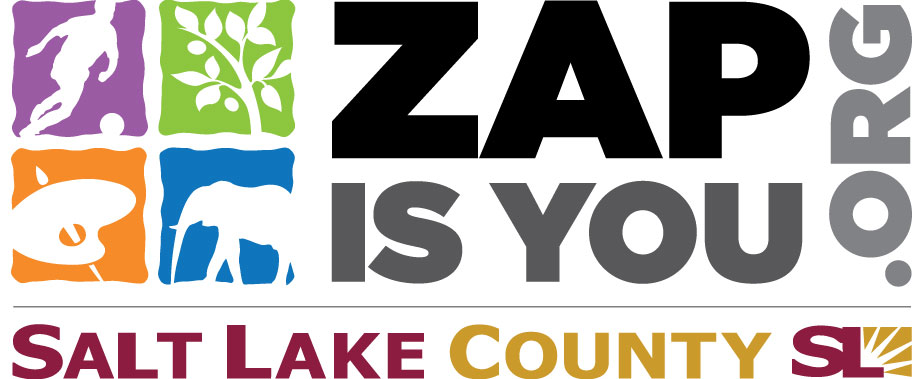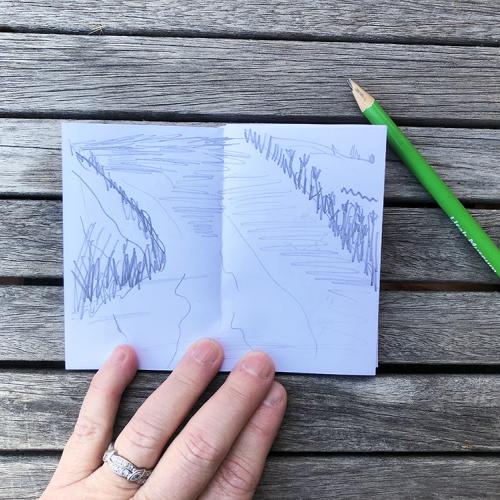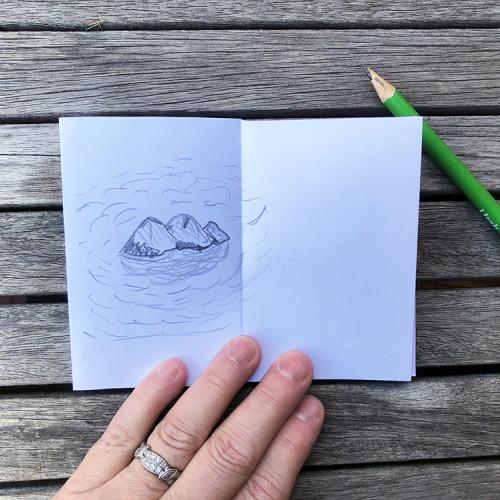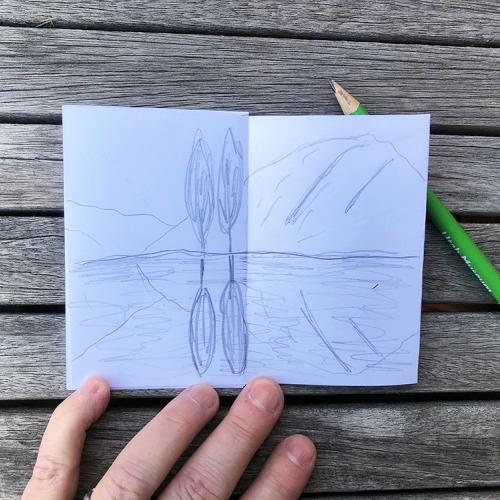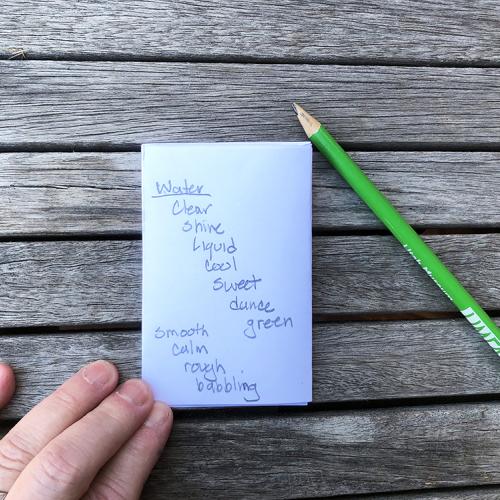Make a Sketchbook
The new 2021 exhibition Confluence explored the idea of water from several perspectives from our community. Where does it come from? Who uses it? How do we help keep our water systems healthy? Learn all about water through these three artworks in the exhibition. Then create a small sketchbook at home using just paper and scissors to record your own exploration of water.
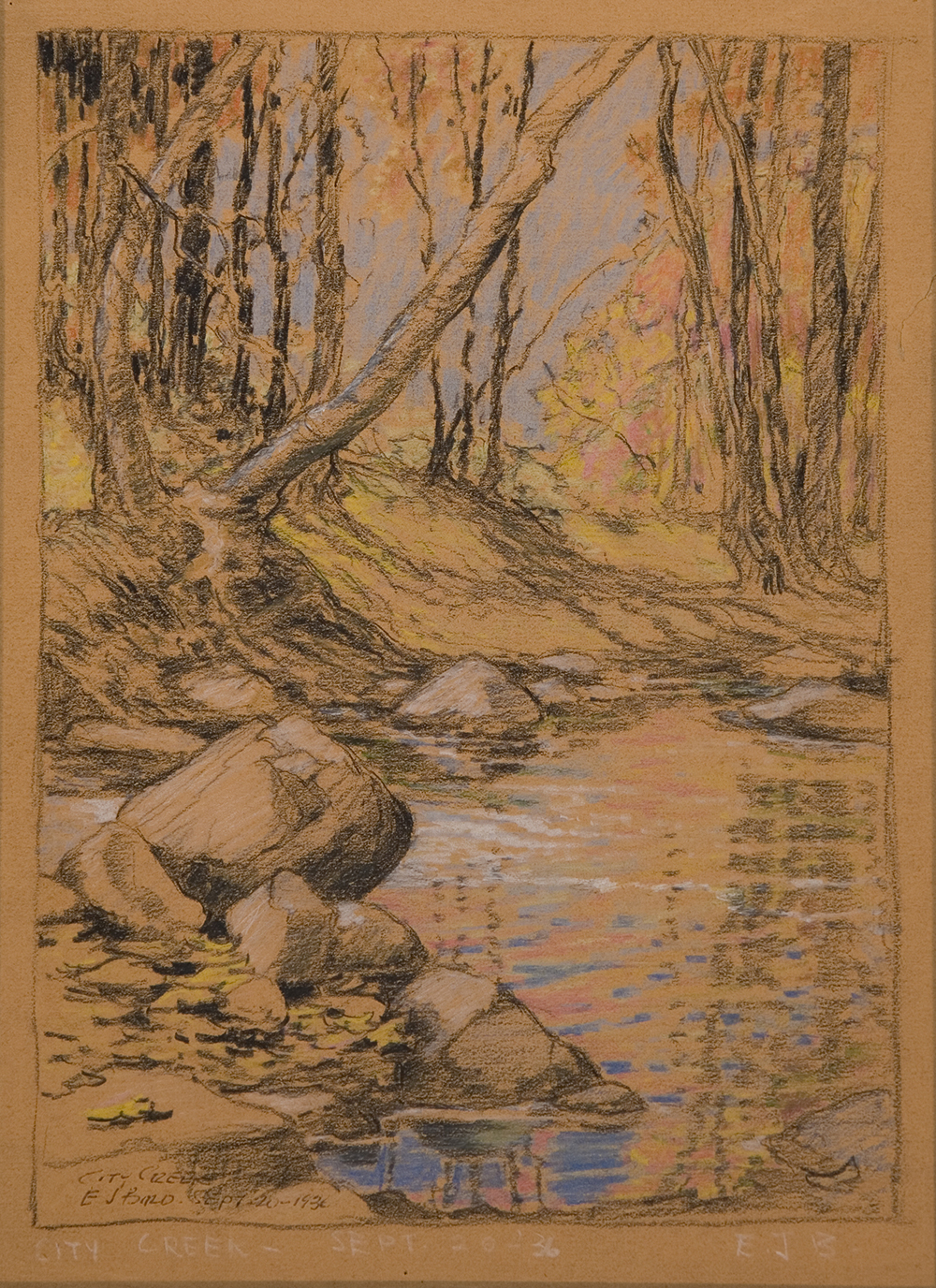
Elzy J. Bird, American, 1911-2001, City Creek, 1936, Nah-po-pah, 1936, pastel on paper, gift of Mr. and Mrs. Joseph J. Palmer, UMFA1991.069.00
Artists throughout time have recorded their observations of nature, especially water. This artist in the UMFA collection documented City Creek, originally called Nah-po-pah by the Ute people who first lived in Salt Lake Valley. Where do you see the most color in this drawing? Elzy Bird focused a lot on the reflection he saw in the creek. After you make a sketchbook, take it outside to sketch and record your own observation of water. What is the name of the waterway you are sketching? What part of the water will you focus on?
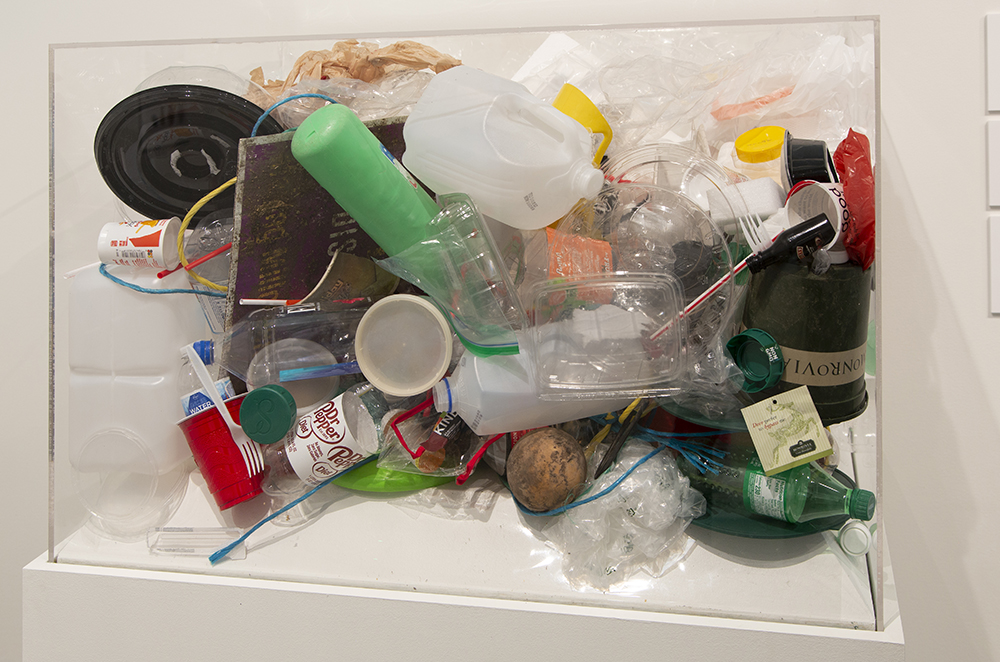
Origins unknown, buyers unknown. Unrecycled, non-biodegradable. Thirst of users quenched: unknown.
This corner of the gallery in Confluence shows plastic waste that was collected in Nah-po-pah (City Creek) in Salt Lake City. Why would the artist want to take something like plastic waste from a creek and share it in an art museum? One clue could be the poems that are on the wall behind. One poem says:
“This will end with water.”
“And, suddenly, the rivers flow upstream.
Or the streets become rivers.”
Excerpts from “Glimpses of a Day in the Sun.” Author, Alexander Fredman. saltfront no. 8, 2020.
Your sketchbook can also be used to write words that are inspired by the water you see in nature. Try making a poem or even a list of words to go along with your sketch in the sketchbook.
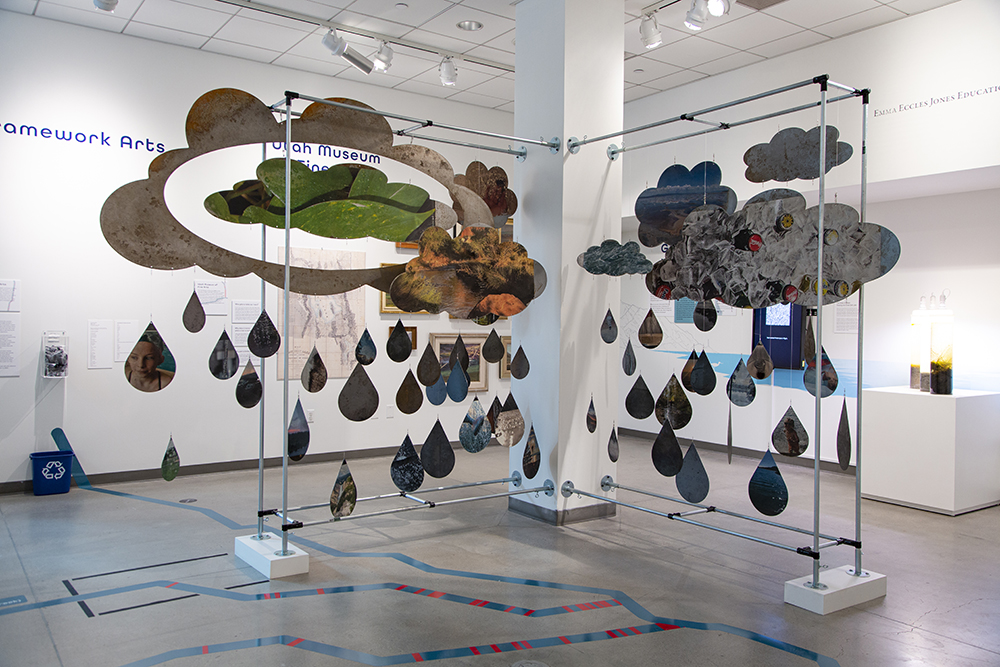
This sculpture shows water-themed photographs in the hanging raindrops. The artist worked with her community to tell their own stories about water. You can listen to the audio that is part of the sculpture here. As you listen to this recording, think about water in your own life. How do you use water? What types of water are around you? Use your sketchbook to document the ways water interacts with you.
Make a Sketchbook
Let’s make a simple sketchbook from a piece of paper and some scissors. You can staple a couple of these sketchbooks together if you want more pages to sketch on. After you are done, you can take your sketchbook outside to sketch water you see in your environment.
You can follow along the photos below to create your sketchbook or view this video:
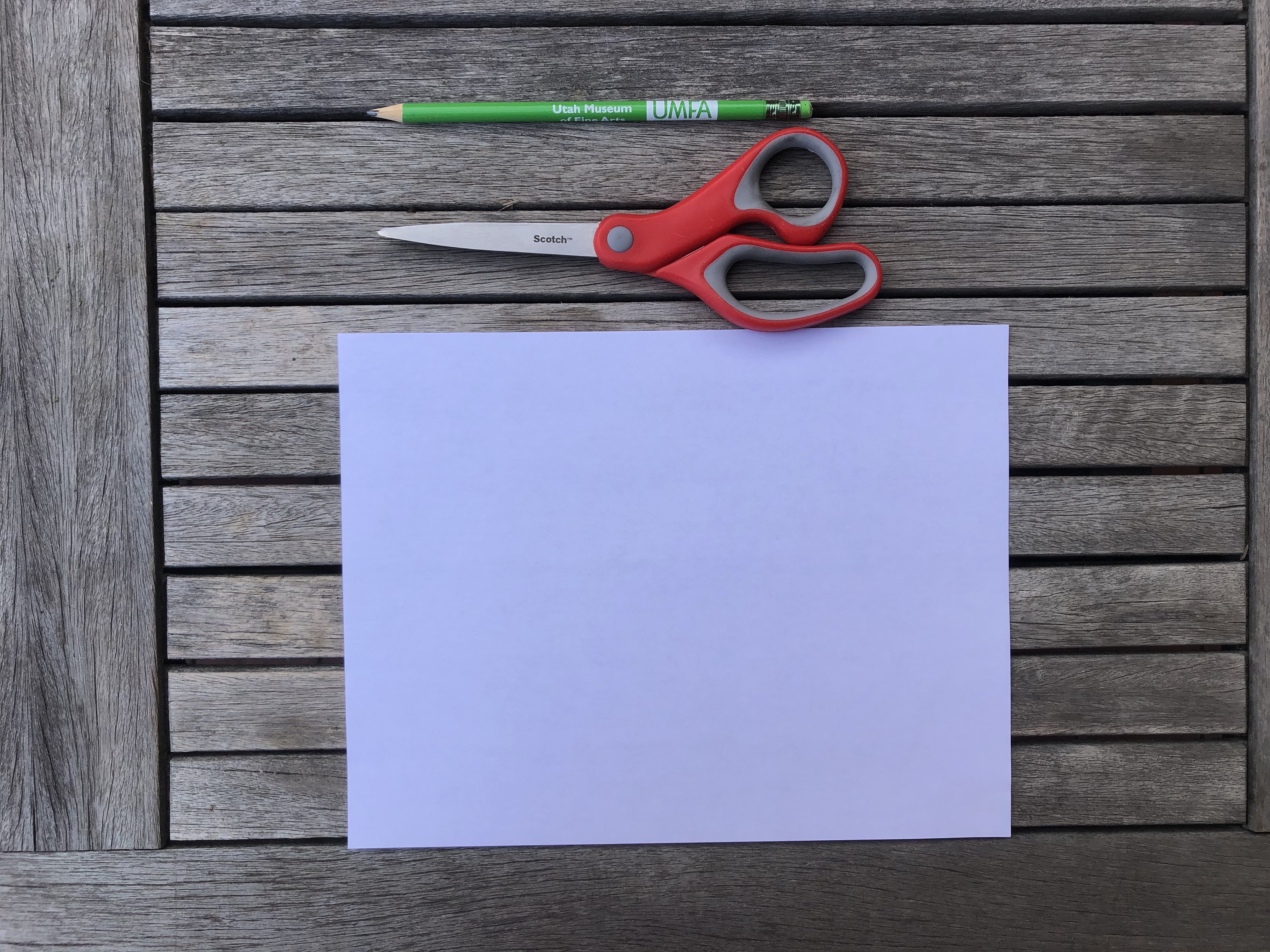
You will need:
- A piece of paper - 8.5” x 12”
- Scissors
- Pencil or other drawing material.
Directions:
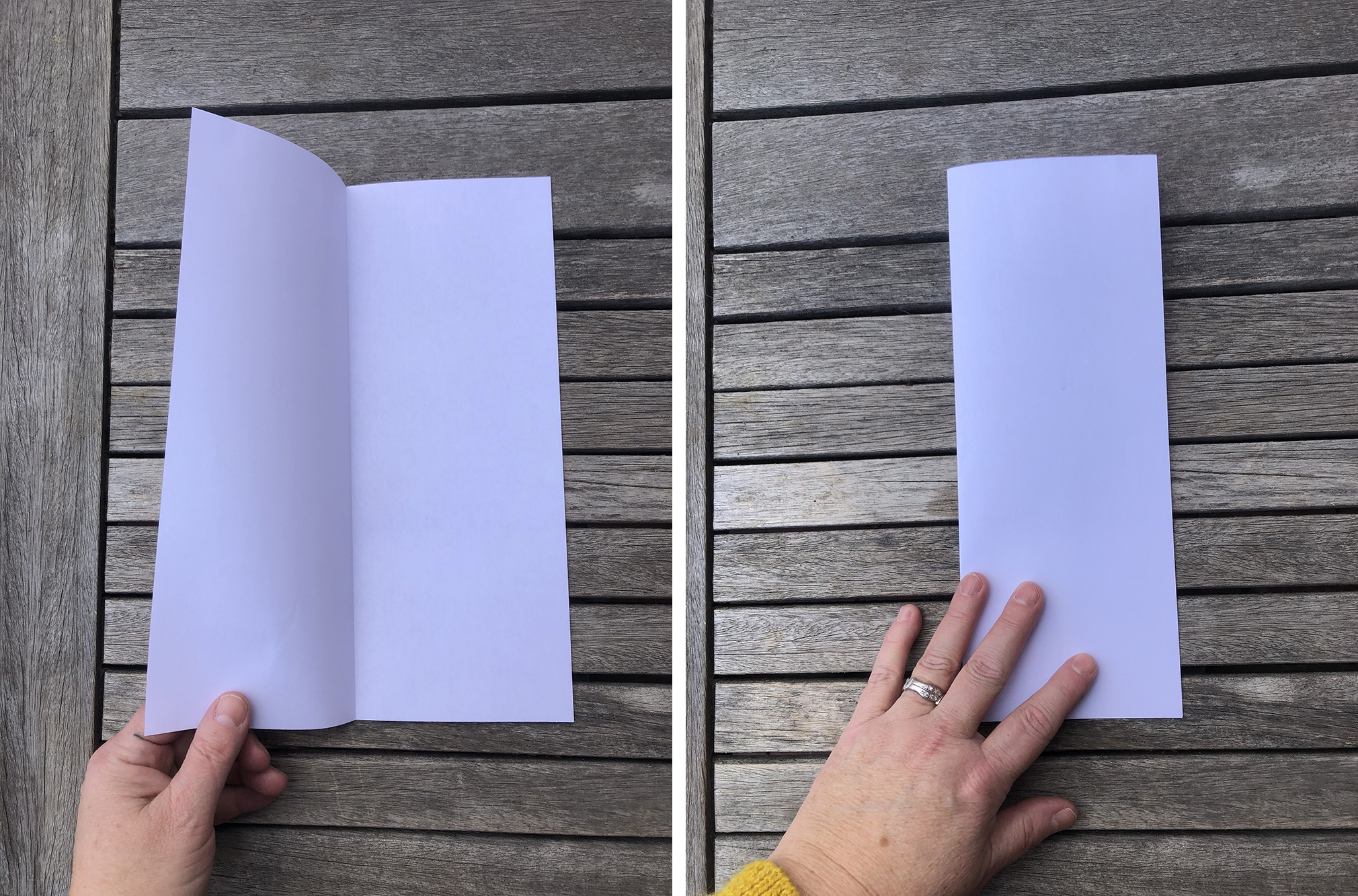
1. Fold the paper in half along the long side (like a hot dog).
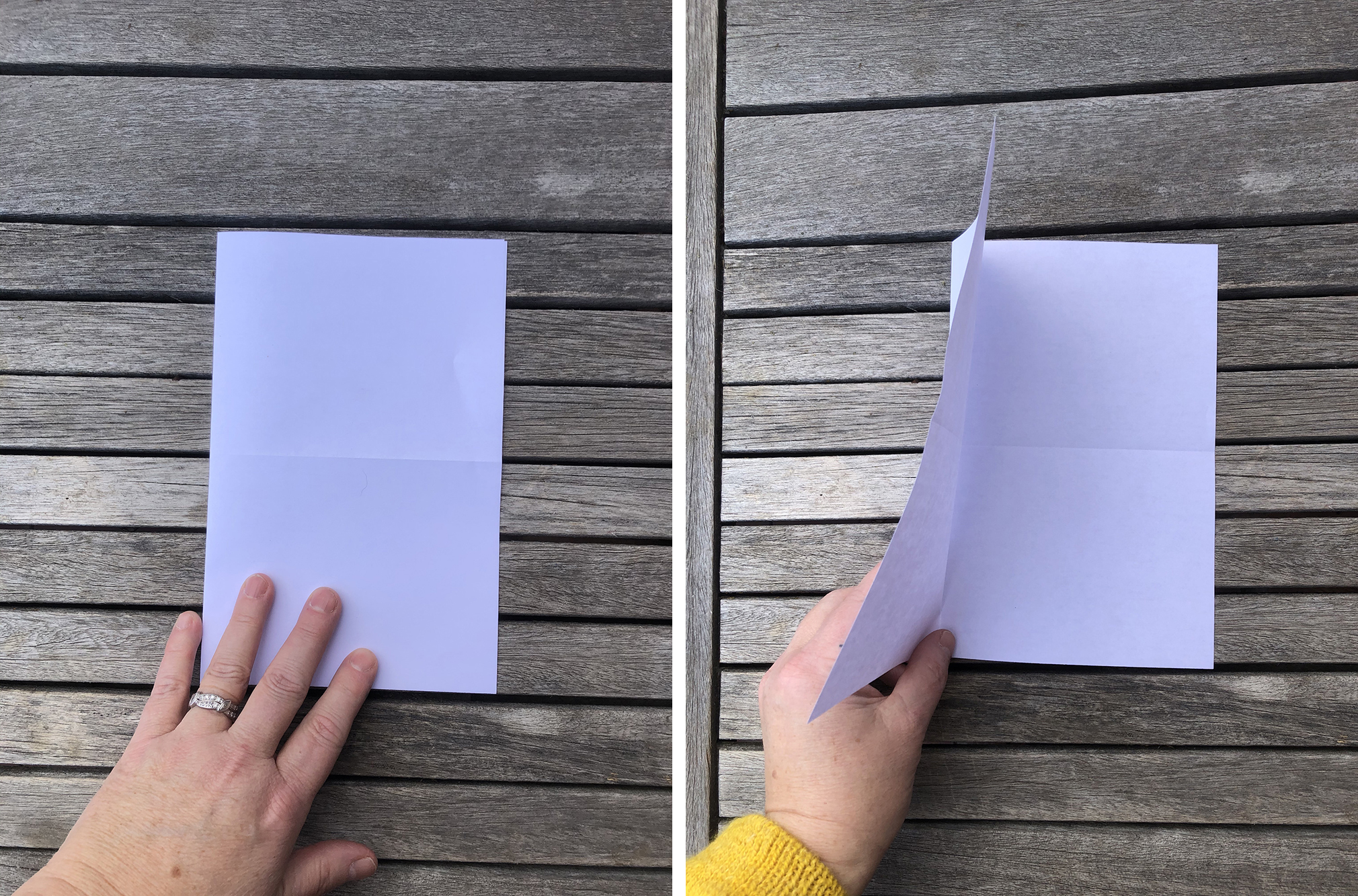
2. Open up the paper and fold it again along the short side (like a hamburger).
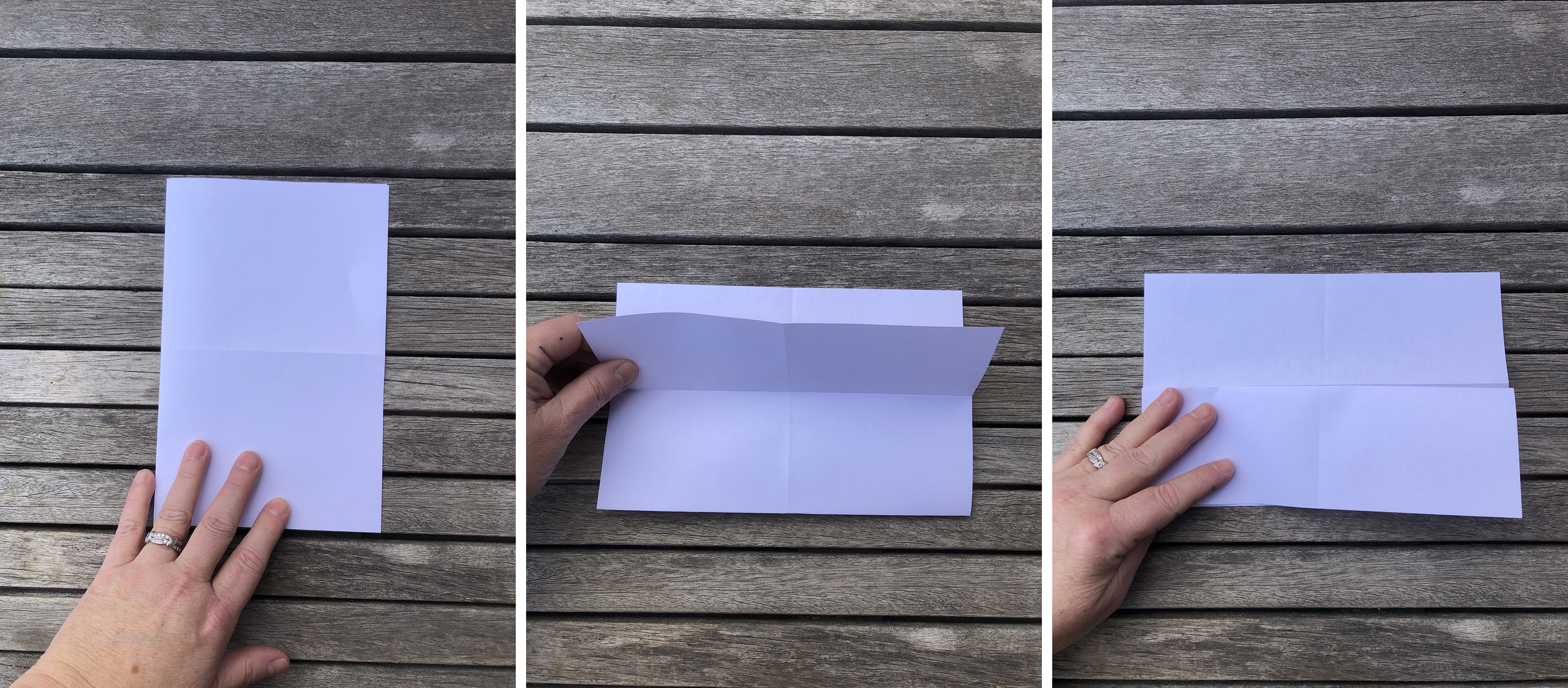
3. Keep the paper folded and fold the short side down and toward the center fold.
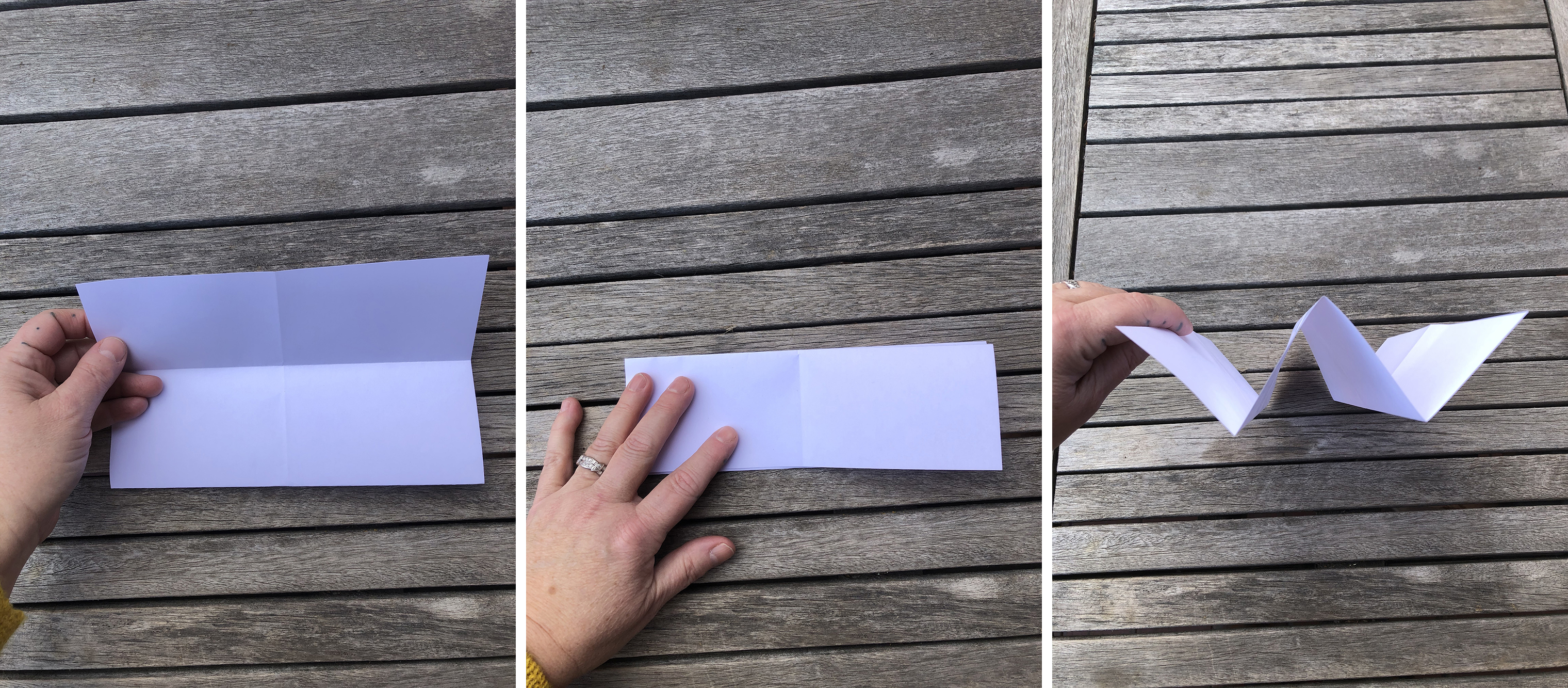
4. Turn the paper over and fold the other short side down and toward the center fold. You should now have a W shaped paper when you look at it from the side – like an accordion.
5. Open the paper up and re-fold it again on the short side like a hamburger.
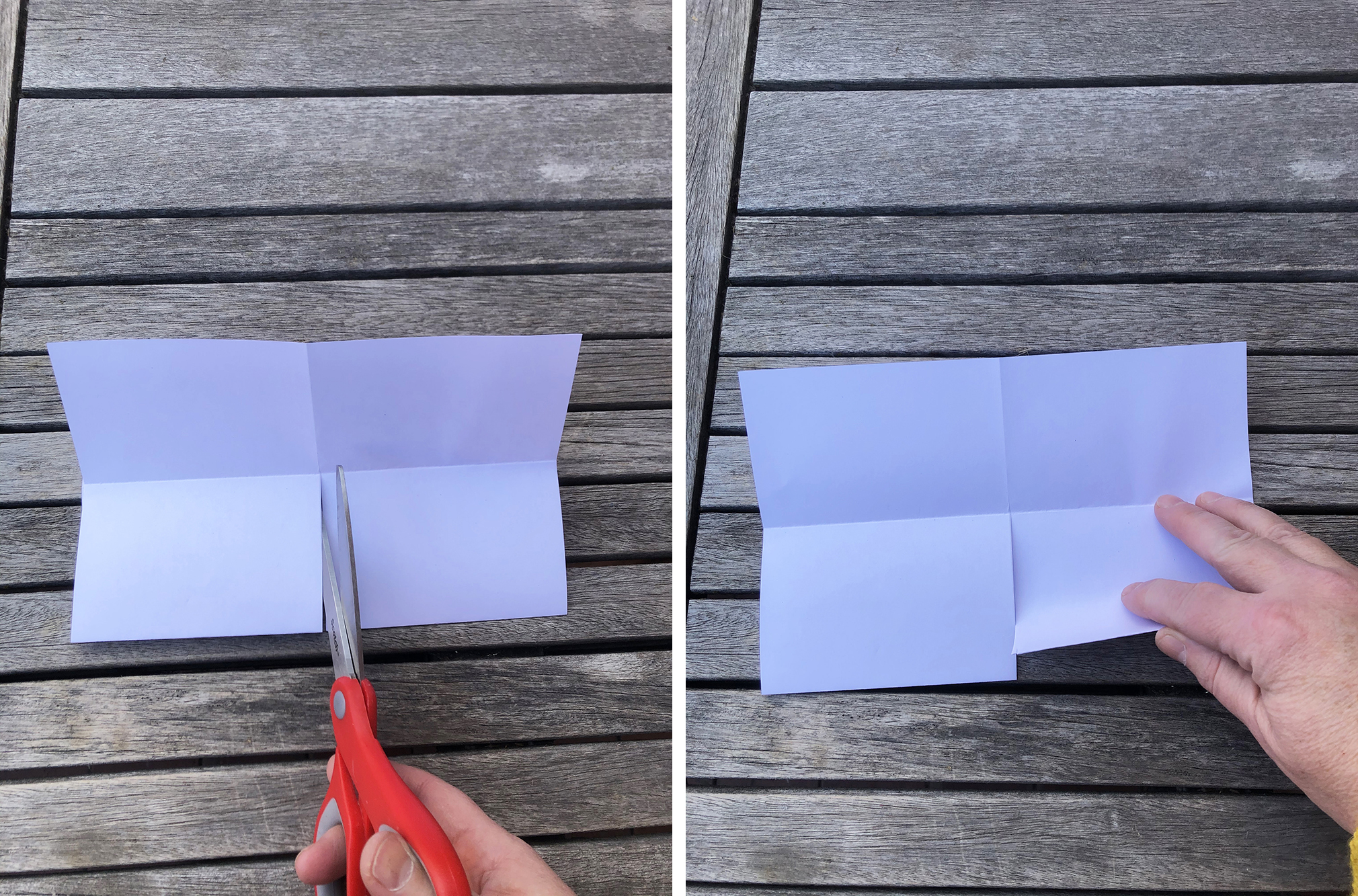
6. On the fold in the middle of the paper begin cutting from the folded side up half way. Stop cutting when you reach the fold halfway up the paper.
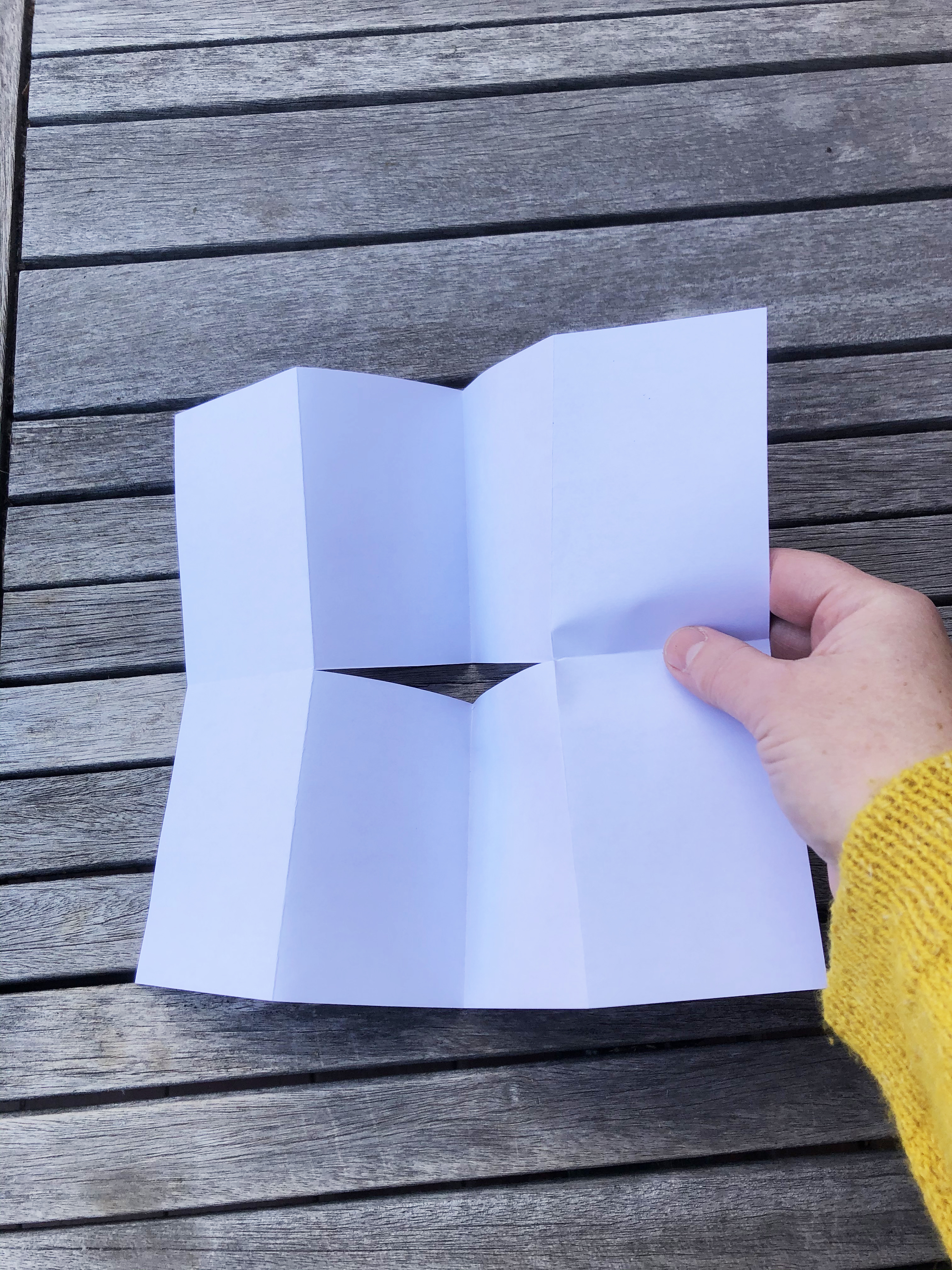
7. Unfold the paper flat. You now have a slit right in the middle of the paper.
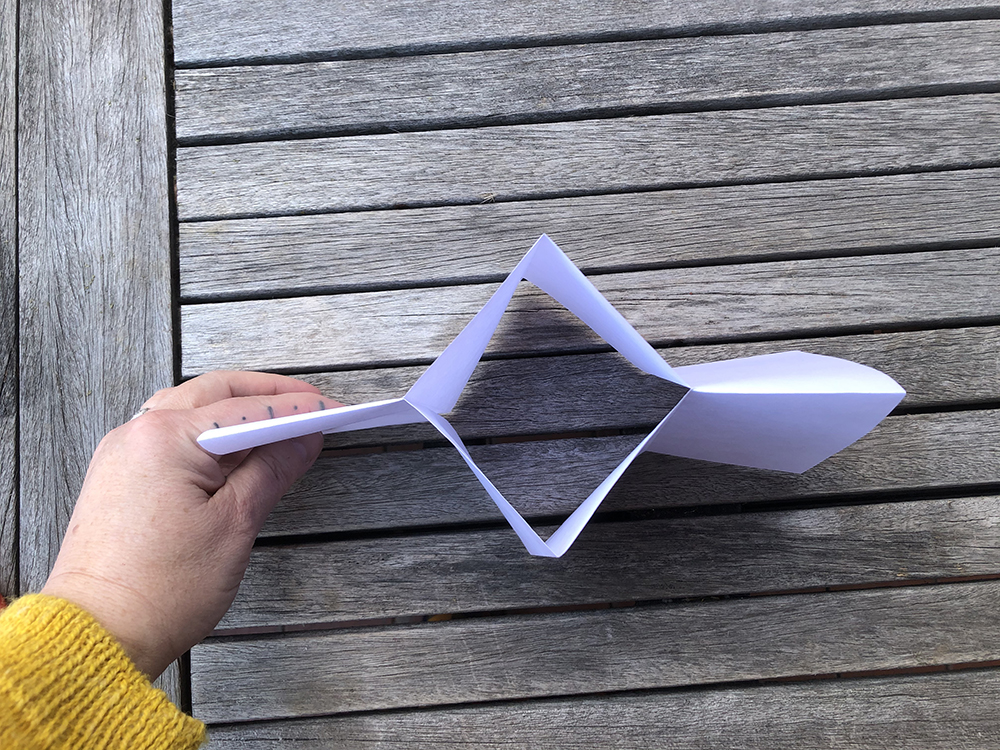
8. Fold it once more along the long side hot dog style.

9. Hold the edges of the folded paper and push in, collapsing the folded paper into a book.
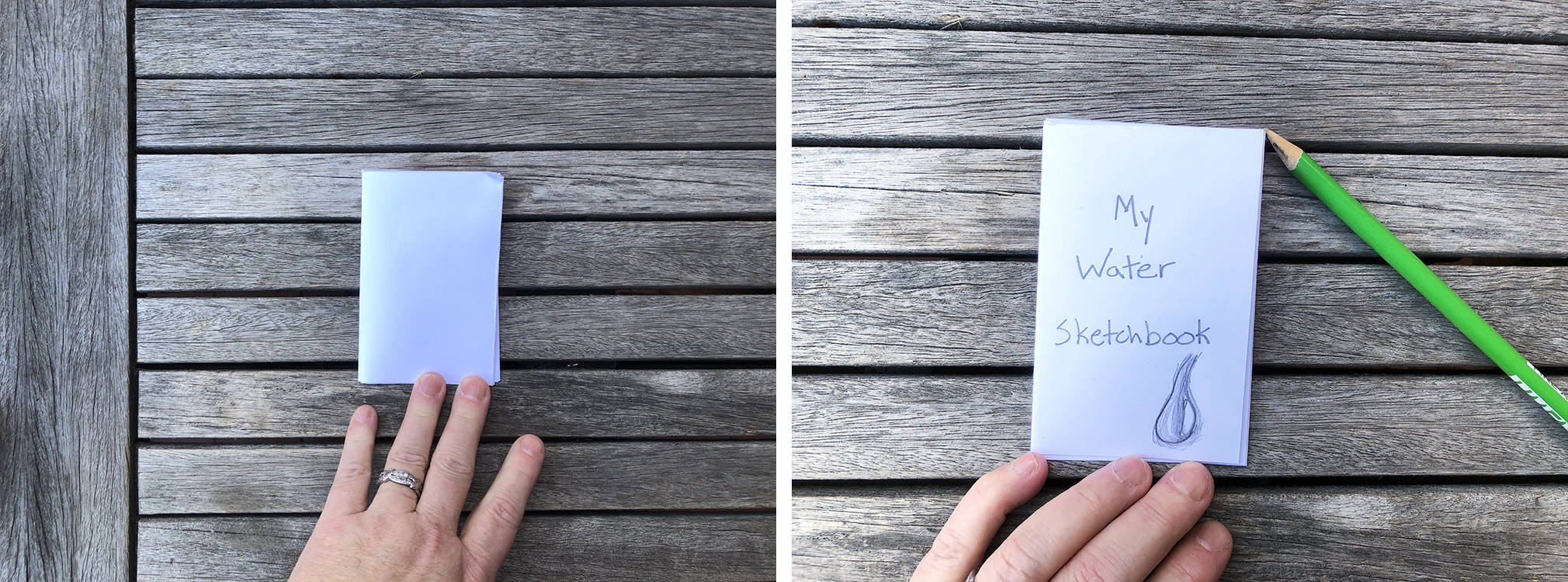
10. You can now use this sketchbook to begin drawing!
Some tips for sketching water:
- Water changes a lot because it is fluid and can be hard to draw. Think of the water you are drawing as one object and begin to sketch its form. You can fill in the details after you have the outlines drawn.
- Look at the surface of the water you are drawing and try to see lines, shapes and colors. Think of the surface as a table cloth that you can draw.
- If you want to draw reflections on the surface, notice that the objects above the water are lighter than the objects reflected in the water. Draw the reflection a shade darker in the water.
Practice! The only way to get better at drawing is to draw and sketch a lot. Keep practicing whenever you are outside and don’t worry about what it looks like. Have fun with your drawing!
Third Saturdays are funded by Salt Lake County Zoo, Arts & Parks (ZAP).
